前言: springmvc是什么,能做什么,即使是新手,也应该有所了解,俺这里就不一一赘述了。
首先我们需要引入javaee的一些概念,为什么要引入它呢?不明觉厉,不管是什么样的web框架,那么这玩意是基础。不用怀疑。所以不管如何变化,我们要谨记,是跟javaee的东西打交道。
需要大家自行掌握的概念有: servlet容器,包括ServletContext,Listener,ServletConfig。 session,request这些就不说了。
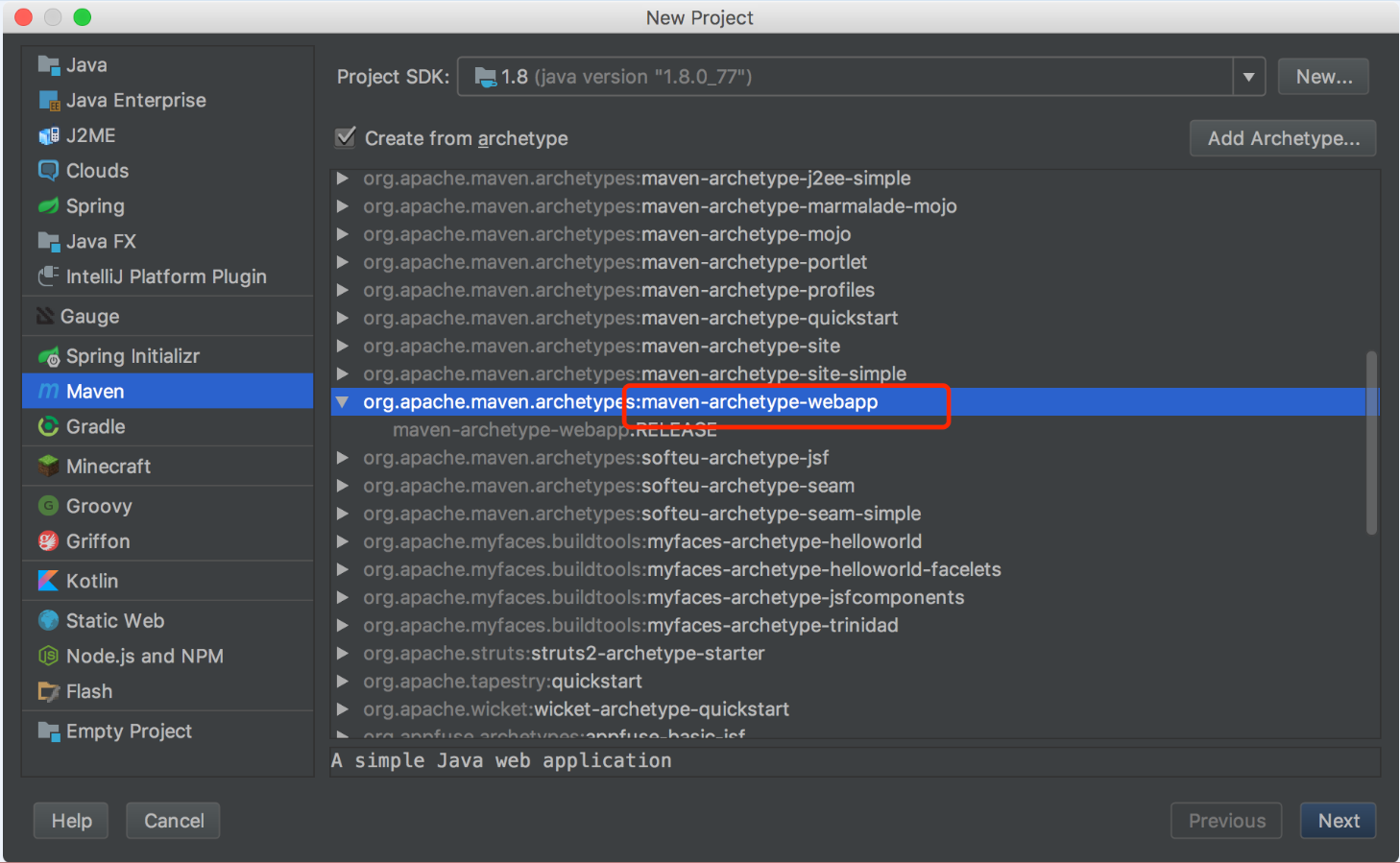
工欲善其事,必先利其器。所以我们需要先折腾一个springmvc的工程。我这里使用maven模板去创建。
选择这一个模板
- org.jetbrains.idea.maven.model.MavenArchetype
工程创建完后我们需要引入对应的jar包。我这里按照最小化配置来。
<dependency>
<groupId>org.springframework</groupId>
<artifactId>spring-webmvc</artifactId>
<version>4.3.2.RELEASE</version>
</dependency>
加入webmvc(ps: 这里使用了webmvc,它里面又内置了好几个。包括我们熟悉的servlet, spring-beans,context等等)
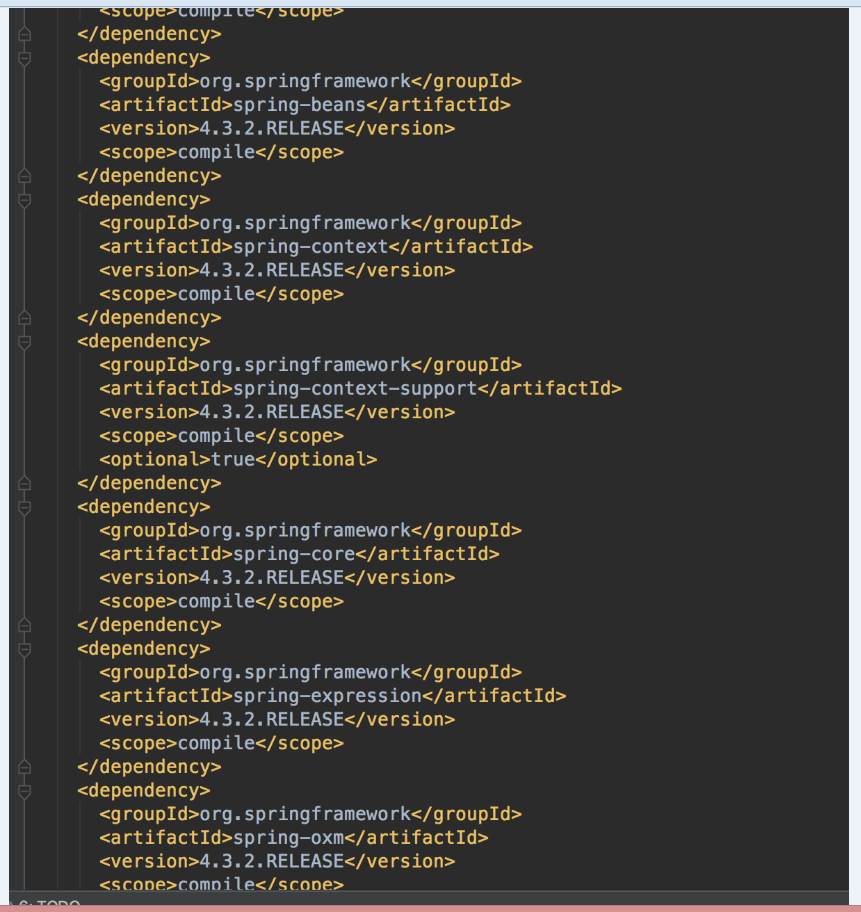
具体详见webmvc的pom。这里不再累述,我们继续配置
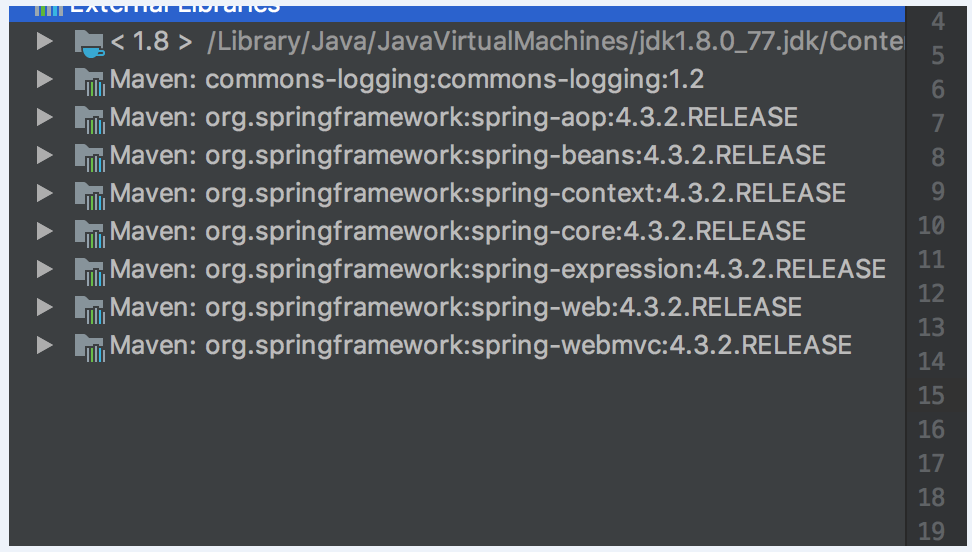
最后加完的jar包有这么多,实际上因为servlet-api是provided的 所以这里没有出现,但并不意味着他不存在。。
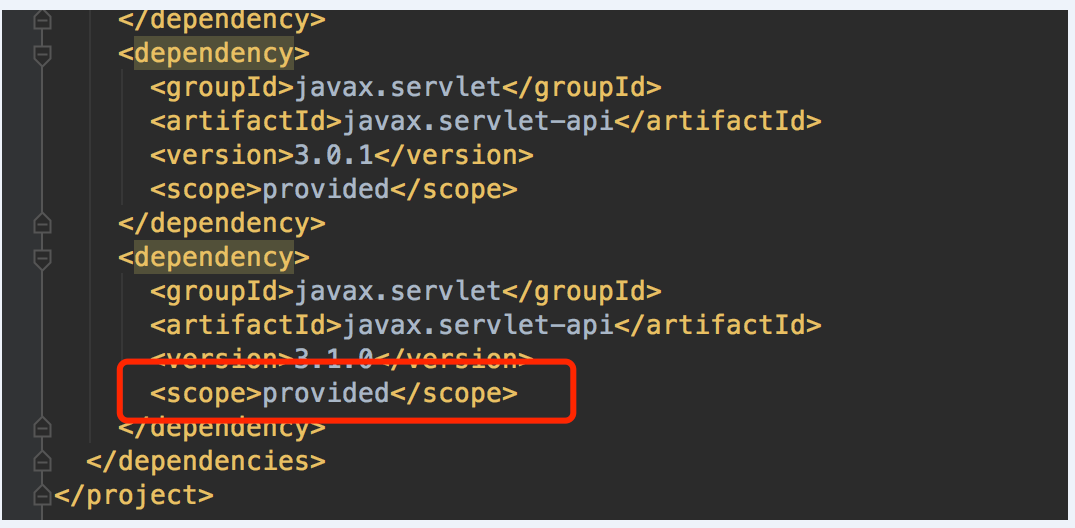
在web.xml中添加
<context-param>
<param-name>contextConfigLocation</param-name>
<param-value>classpath:applicationContext.xml</param-value>
</context-param>
<listener>
<listener-class>org.springframework.web.context.ContextLoaderListener</listener-class>
</listener>
<servlet>
<servlet-name>spring</servlet-name>
<servlet-class>org.springframework.web.servlet.DispatcherServlet</servlet-class>
<load-on-startup>1</load-on-startup>
</servlet>
<servlet-mapping>
<servlet-name>spring</servlet-name>
<url-pattern>/*</url-pattern>
</servlet-mapping>
在resources目录中创建 applicationContext, 添加扫包(这里不扫描Controller注解的)
<!-- configure auto scan -->
<context:component-scan base-package="org.spring">
<context:exclude-filter type="annotation"
expression="org.springframework.stereotype.Controller" />
</context:component-scan>
在WEB-INF中创建spring-servlet.xml,加入扫描Controller的扫包配置和激活RequestMappingHanlder适配器
<context:component-scan base-package="org.spring.*.controller" />
<mvc:annotation-driven />
到此我们的工程已经可以在容器中跑起来了。当然,上面的并不是重点,接下来才是重头戏。跟着我们的代码飞吧。
启动工程,进入 ContextLoaderListener , 我们会发现他是实现了继承自ContextLoader,实现的是ServletContextListener接口。
这里多说一句。
有好奇的小伙伴就会问,继承ContextLoader 的作用是什么呀?
且听我一一道来。
ContextLoaderListener他的主要作用是在web应用程序启动时载入ioc容器。具体详见下面会分解。而ContextLoader正是对ioc容器初始化进行了资源加载等操作,属于灵魂级的类
ok, 我们继续说监听器。
我们打开ServletContextListener接口。发现如下方法, 见名知意。init开头的就是初始化执行的动作,另外一个则是销毁
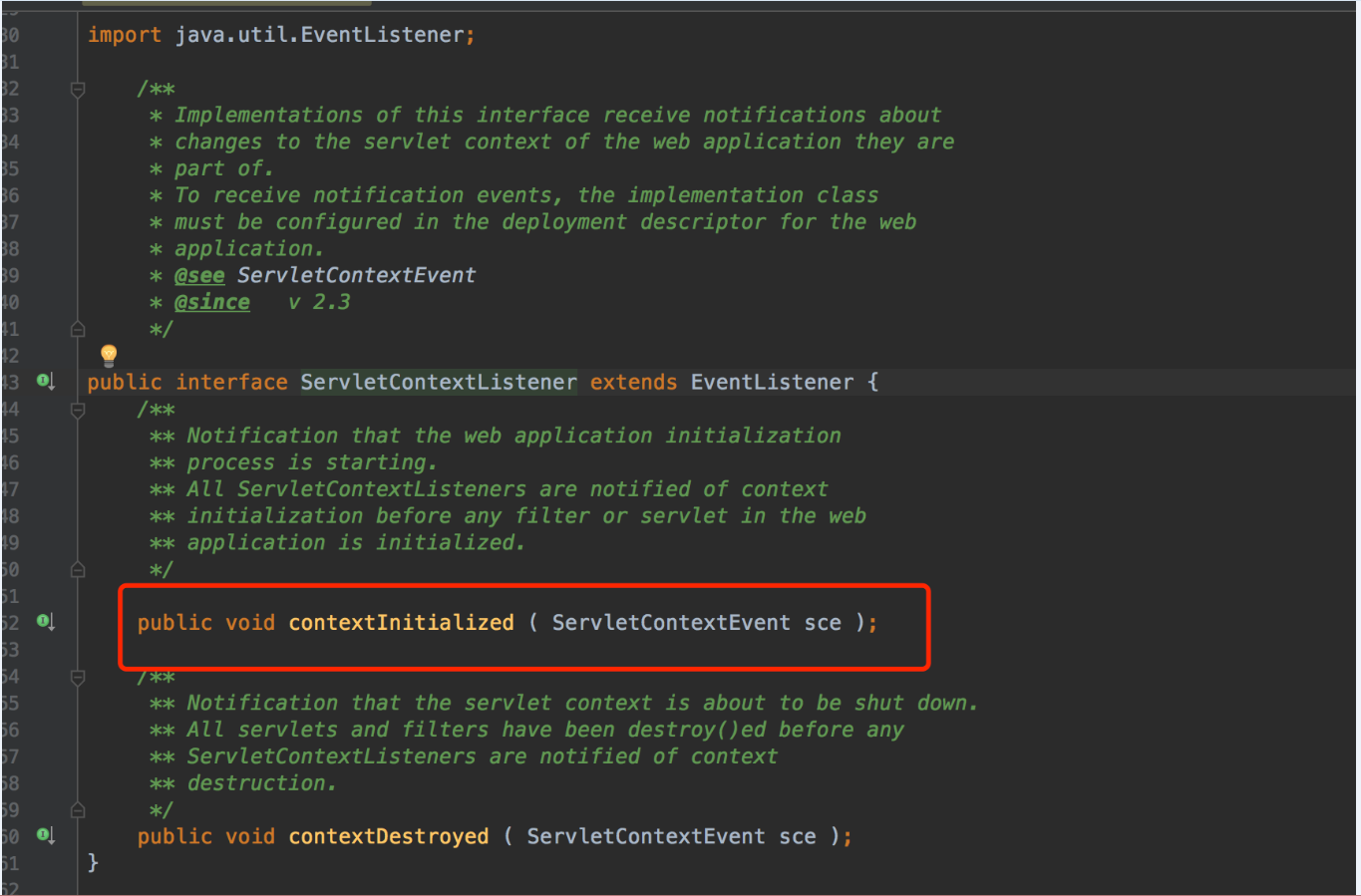
销毁暂且不论,初始化才是我们的重头戏。我们看到他最后执行了这样的操作。其实就是调用了ContextLoader.initWebApplicationContext(ServletContext servletContext) 方法。具体源码如下

废话不多说,我们先看initWebApplicationContext(event.getServletContext()); 做了什么
根源:

首先创建一个抽象的ClassPathResource,这玩意有点类似于java的File对象,是一个抽象的东东。
然后将其load进来。我们看看这个properties文件中的内容。
# Default WebApplicationContext implementation class for ContextLoader.
# Used as fallback when no explicit context implementation has been specified as context-param.
# Not meant to be customized by application developers.
org.springframework.web.context.WebApplicationContext=org.springframework.web.context.support.XmlWebApplicationContext
可以看得出来,这是一个ApplicationContext的实现类。这就是spring真正的上下文类。我们看看他的继承体系结构图
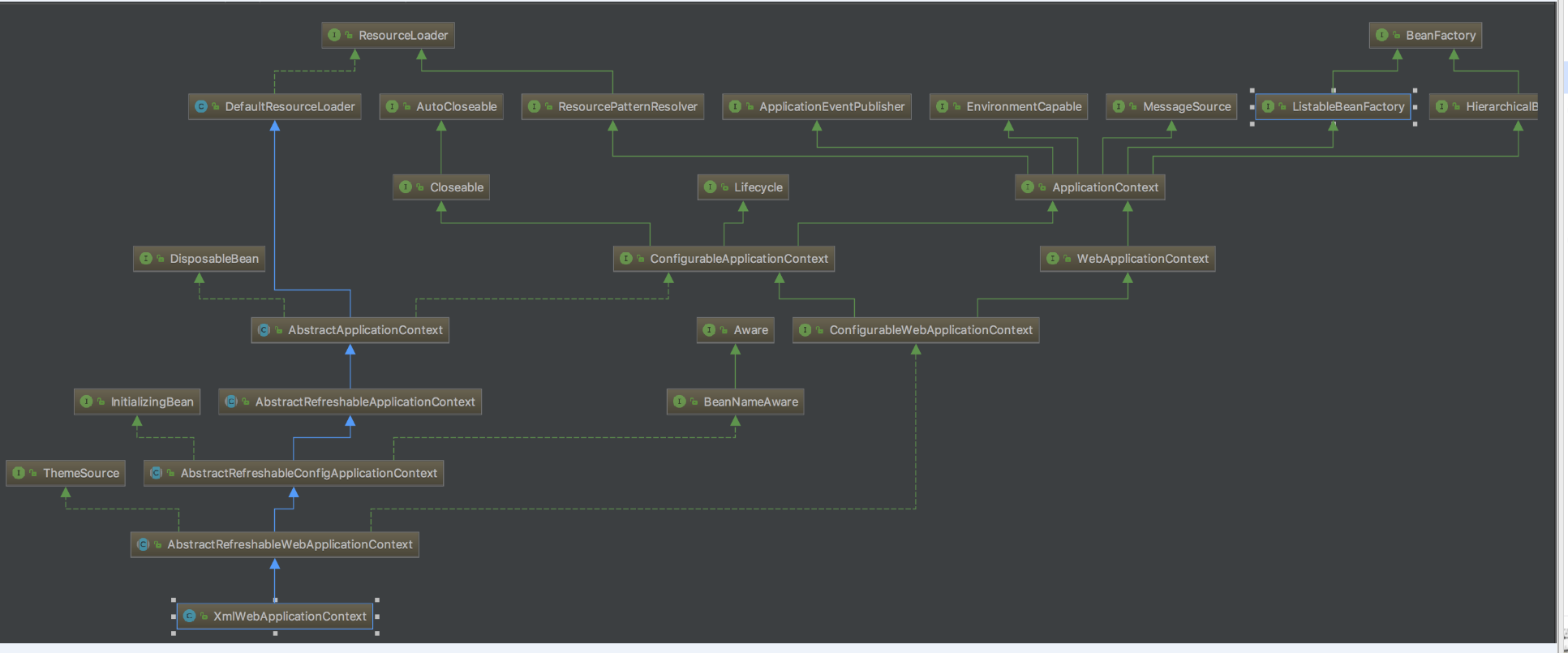
进入正题。开始创建它
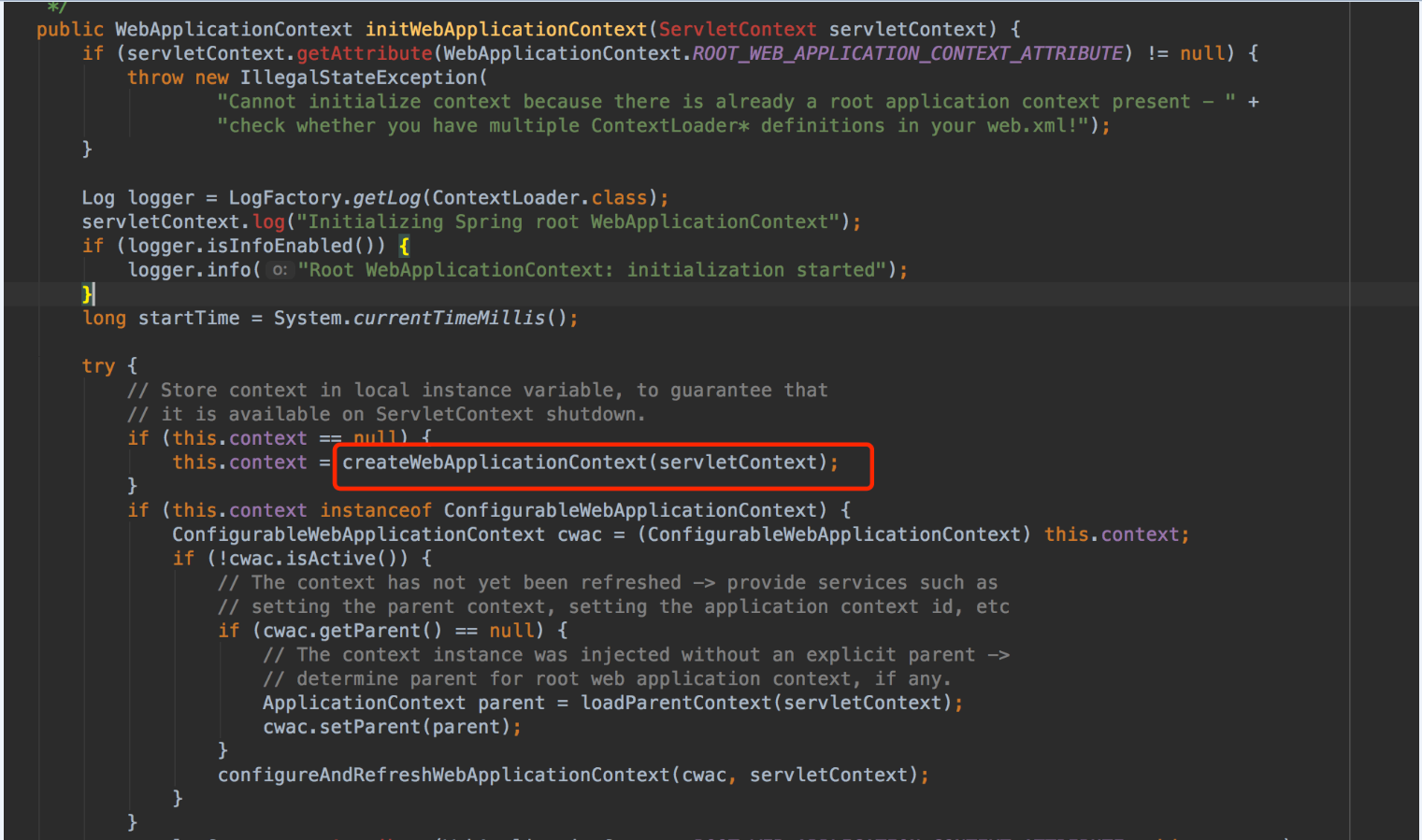
进入createWebApplicationContext。

这个时候从servletContext中去取contextClass 是空。那么他从配置文件中根据这个类名去获取对应的value值。也就是org.springframework.web.context.support.XmlWebApplicationContext 然后使用Class.forName的方式将其加载
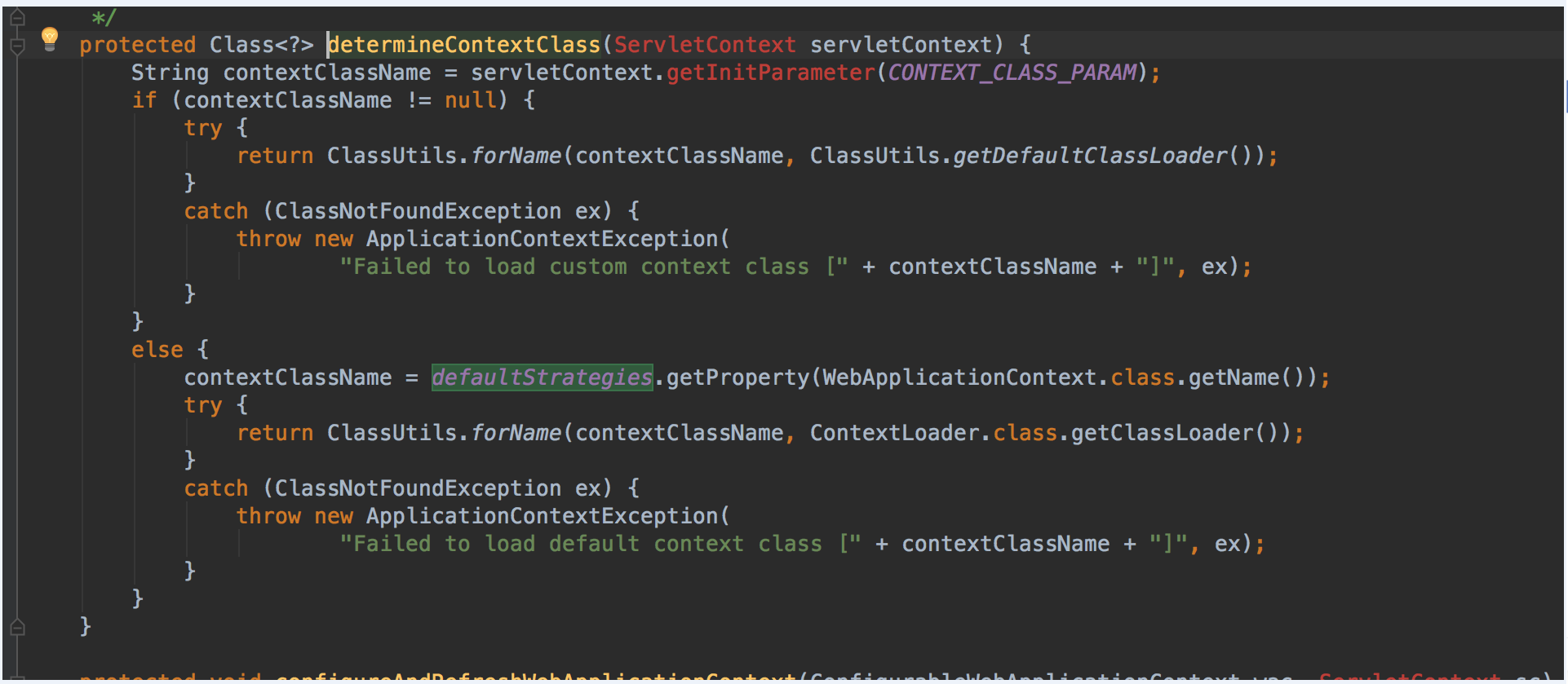
然后拿到加载完毕的类,使用BeanUtils.instantiateClass(contextClass); 初始化
等同于Object object = new Object()这种方式。因为它使用的是反射。
这里把上面的流程屡一下。。
public WebApplicationContext initWebApplicationContext(ServletContext servletContext) {
// 如果上下文中存在 WebApplicationContext 则抛异常。说明WebApplicationContext已经被初始化过了。
if (servletContext.getAttribute(WebApplicationContext.ROOT_WEB_APPLICATION_CONTEXT_ATTRIBUTE) != null) {
throw new IllegalStateException(
"Cannot initialize context because there is already a root application context present - " +
"check whether you have multiple ContextLoader* definitions in your web.xml!");
}
Log logger = LogFactory.getLog(ContextLoader.class);
servletContext.log("Initializing Spring root WebApplicationContext");
if (logger.isInfoEnabled()) {
logger.info("Root WebApplicationContext: initialization started");
}
long startTime = System.currentTimeMillis();
try {
// Store context in local instance variable, to guarantee that
// it is available on ServletContext shutdown.
if (this.context == null) {
// 这里去初始化上下文。具体流程上面已经有讲到
this.context = createWebApplicationContext(servletContext);
}
// 我们已知 从properties中读取到的类为XmlWebApplicationContext 且 XmlWebApplicationContext 是 ConfigurableWebApplicationContext的子类,所以这个判断会进去
if (this.context instanceof ConfigurableWebApplicationContext) {
// 强转
ConfigurableWebApplicationContext cwac = (ConfigurableWebApplicationContext) this.context;
// cwac尚未被激活,目前还没有进行配置文件加载
if (!cwac.isActive()) {
// The context has not yet been refreshed -> provide services such as
// setting the parent context, setting the application context id, etc
if (cwac.getParent() == null) {
// The context instance was injected without an explicit parent ->
// determine parent for root web application context, if any.
ApplicationContext parent = loadParentContext(servletContext);
cwac.setParent(parent);
}
// 加载配置文件。
configureAndRefreshWebApplicationContext(cwac, servletContext);
}
}
servletContext.setAttribute(WebApplicationContext.ROOT_WEB_APPLICATION_CONTEXT_ATTRIBUTE, this.context);
ClassLoader ccl = Thread.currentThread().getContextClassLoader();
if (ccl == ContextLoader.class.getClassLoader()) {
currentContext = this.context;
}
else if (ccl != null) {
currentContextPerThread.put(ccl, this.context);
}
if (logger.isDebugEnabled()) {
logger.debug("Published root WebApplicationContext as ServletContext attribute with name [" +
WebApplicationContext.ROOT_WEB_APPLICATION_CONTEXT_ATTRIBUTE + "]");
}
if (logger.isInfoEnabled()) {
long elapsedTime = System.currentTimeMillis() - startTime;
logger.info("Root WebApplicationContext: initialization completed in " + elapsedTime + " ms");
}
return this.context;
}
catch (RuntimeException ex) {
logger.error("Context initialization failed", ex);
servletContext.setAttribute(WebApplicationContext.ROOT_WEB_APPLICATION_CONTEXT_ATTRIBUTE, ex);
throw ex;
}
catch (Error err) {
logger.error("Context initialization failed", err);
servletContext.setAttribute(WebApplicationContext.ROOT_WEB_APPLICATION_CONTEXT_ATTRIBUTE, err);
throw err;
}
}
然后我们进入加载配置文件那一段
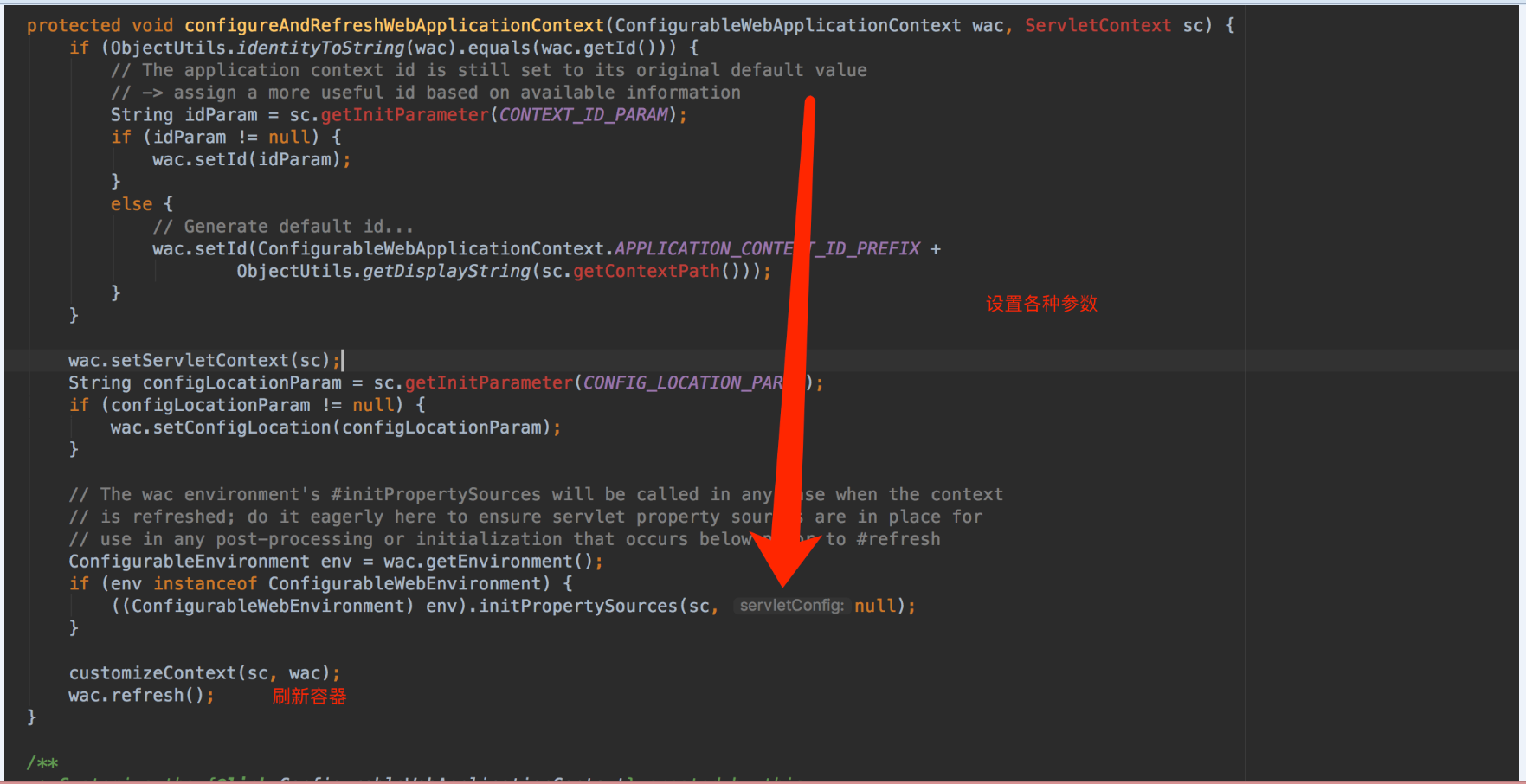
有IOC经验的朋友应该知道,只有真正刷新IOC容器的时候才是IOC容器真正初始化并注册各种bean的时候。这里不再赘述。后续文章会对ioc容器进行覆盖式轰炸。。这里只需要知道概念就OK。
总结: 通过讲解ContextLoaderListener,我们会发现这个东西其实是将javaEE的容器和spring的IOC整合到了一起,之后会把创建完成的上下文对象塞入ServletContext上下文中,注意这里的ServletContext是JavaEE的上下文。也就是说spring自己的上下文在javaee的上下文中只是一个属性。。。至于为什么是这样呢。大家一想就明白了。因为javaee是最外层的规范,而我们的web容器(tomcat, jetty等)实现了这一规范。而spring呢,是需要依托于javaee容器来运行。那么, 就意味着, Spring的IOC容器对于javaEE来讲只是一个属性。。没错。所以javaEE的容器就是spring容器的一个属性。。
本文就写到了这里,希望能帮到大家,谢谢。如果对本文有疑问的请大家留言给我,我会及时回复。
最后打个小广告,欢迎大家加入qq群:77174608 一起讨论学习。。
文章代码已上传至GitHub: 点我进入
gitee地址 : 点此进入





















 2100
2100











 被折叠的 条评论
为什么被折叠?
被折叠的 条评论
为什么被折叠?








